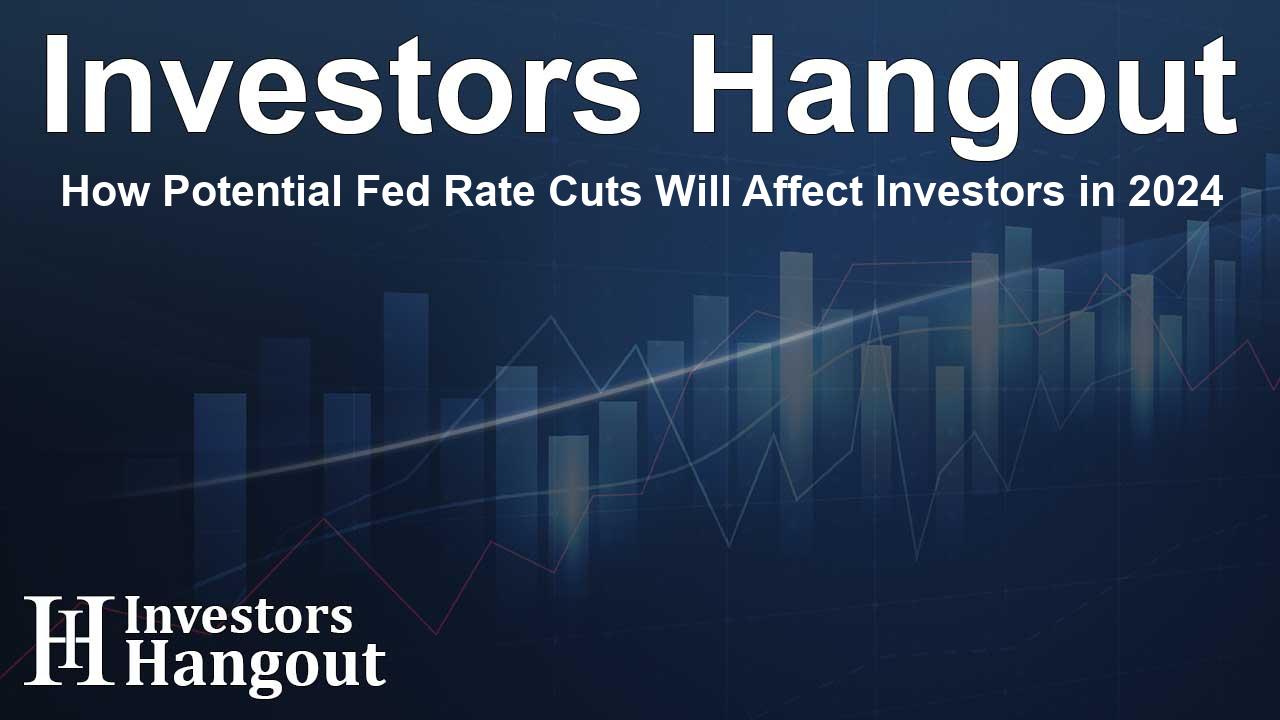How Potential Fed Rate Cuts Will Affect Investors in 2024

Understanding Recent Federal Reserve Rate Cut Discussions
The Federal Reserve, a critical component of the U.S. economy, is making headlines again as investors eagerly anticipate its next move. As market participants hold their collective breath, there is much speculation regarding what Chairperson Jerome Powell and his committee will decide on the upcoming scheduled meeting. Recent betting odds suggest a more substantial rate cut could be more likely than many economists have predicted.
The Odds of Rate Cuts
The Federal Open Market Committee is poised to announce its monetary policy decision soon. Traditionally, this announcement can significantly influence market conditions and investor sentiment. The latest reports reveal that the chances of a 50 basis-point cut stand at approximately 55%, while a 25 basis-point cut hovers around 45%. Interestingly, the futures market presents an even steeper picture, with estimates indicating a 63% chance of a more aggressive 50 bps reduction.
Economists' Predictions
Despite the futures market’s optimism, many economists seem less enthusiastic about a significant rate reduction. A recent survey suggests that around 86% of economists anticipate only a modest 25 bps cut, maintaining that subsequent meetings will also likely yield similar cuts. This disparity in expectations raises essential questions about the future of the economy and the potential implications for different market participants.
Why Rate Cuts Matter
According to market analysts like Charlie McElligott, a substantial cut could signify trouble in the broader economy. This kind of move may instigate a fear-driven reaction among investors, leading to a risk-off sentiment. Historical data provides some context here; leading up to prior 50 basis-point rate cuts, the S&P 500 index has often trended down, while sectors like consumer staples have fared better than technology.
Analyzing Historical Trends
History teaches us that a significant cut doesn't always guarantee market stability. Past data shows the S&P 500 remains relatively unchanged three months following a cut. Notably, events in 2001, 2007, and 1974 marked exceptions where the index saw a fallout. Analysts note that during such times, value stocks typically outperform growth stocks, suggesting a shift in investor strategy may be necessary.
Investment Strategies Moving Forward
As anticipated cuts loom on the horizon, smart investors may want to prepare for shifts in market dynamics. Many investment professionals suggest considering small-cap stocks, known for their potential to surge following rate cuts. For instance, the SPDR S&P 500 ETF Trust (SPY) has performed admirably this year, climbing as much as 19.2% to date, showcasing its resilience even as speculation grows.
Focus on Key Performance Indicators
Investors must remain vigilant, monitoring key performance indicators and market signals. The anticipated Fed policy meeting will reveal not just the immediate outlook for interest rates but also offer critical insights into economic momentum and considerations. Staying informed and agile is vital during these uncertain times, where volatility may become the norm.
Frequently Asked Questions
What is the significance of a 50 basis-point rate cut?
A 50 basis-point rate cut signifies a more aggressive approach by the Federal Reserve to stimulate the economy, potentially indicating underlying economic challenges.
How do rate cuts impact the stock market?
Generally, rate cuts can lead to increased borrowing and spending, injecting liquidity into the market. However, they can also signal economic distress, causing volatility in stock prices.
Which sectors perform well during rate cuts?
During rate cuts, sectors such as consumer staples, utilities, and certain small-cap stocks typically perform better than more volatile sectors like technology.
What should investors consider before a Fed meeting?
Investors should stay current on economic indicators, market trends, and analyst predictions to make informed decisions during Fed meetings and beyond.
How can historical trends guide current investment strategies?
Studying past market performance during similar economic conditions can help investors anticipate future movements and adjust their portfolios accordingly.
About Investors Hangout
Investors Hangout is a leading online stock forum for financial discussion and learning, offering a wide range of free tools and resources. It draws in traders of all levels, who exchange market knowledge, investigate trading tactics, and keep an eye on industry developments in real time. Featuring financial articles, stock message boards, quotes, charts, company profiles, and live news updates. Through cooperative learning and a wealth of informational resources, it helps users from novices creating their first portfolios to experts honing their techniques. Join Investors Hangout today: https://investorshangout.com/
Disclaimer: The content of this article is solely for general informational purposes only; it does not represent legal, financial, or investment advice. Investors Hangout does not offer financial advice; the author is not a licensed financial advisor. Consult a qualified advisor before making any financial or investment decisions based on this article. The author's interpretation of publicly available data shapes the opinions presented here; as a result, they should not be taken as advice to purchase, sell, or hold any securities mentioned or any other investments. The author does not guarantee the accuracy, completeness, or timeliness of any material, providing it "as is." Information and market conditions may change; past performance is not indicative of future outcomes. If any of the material offered here is inaccurate, please contact us for corrections.